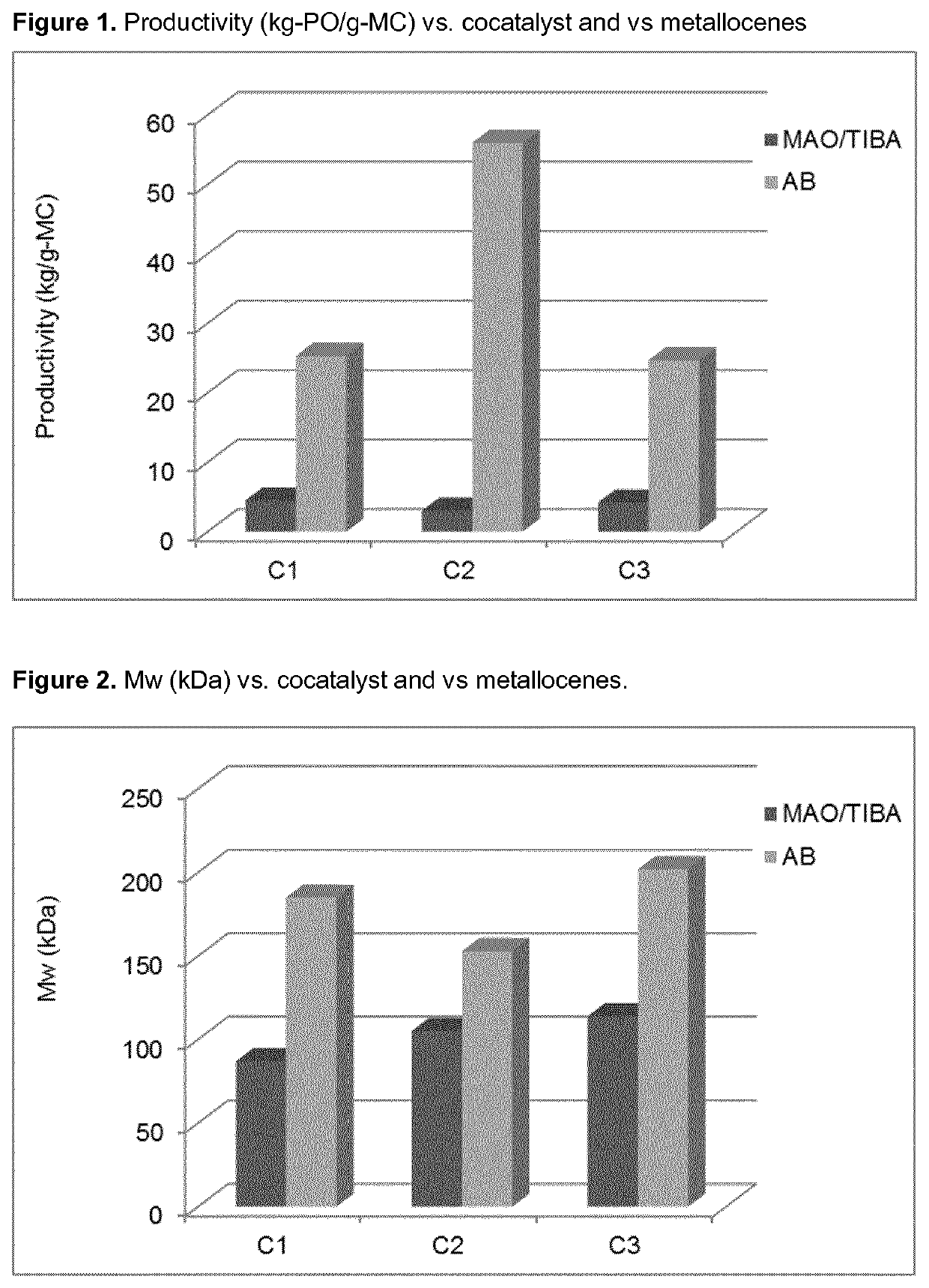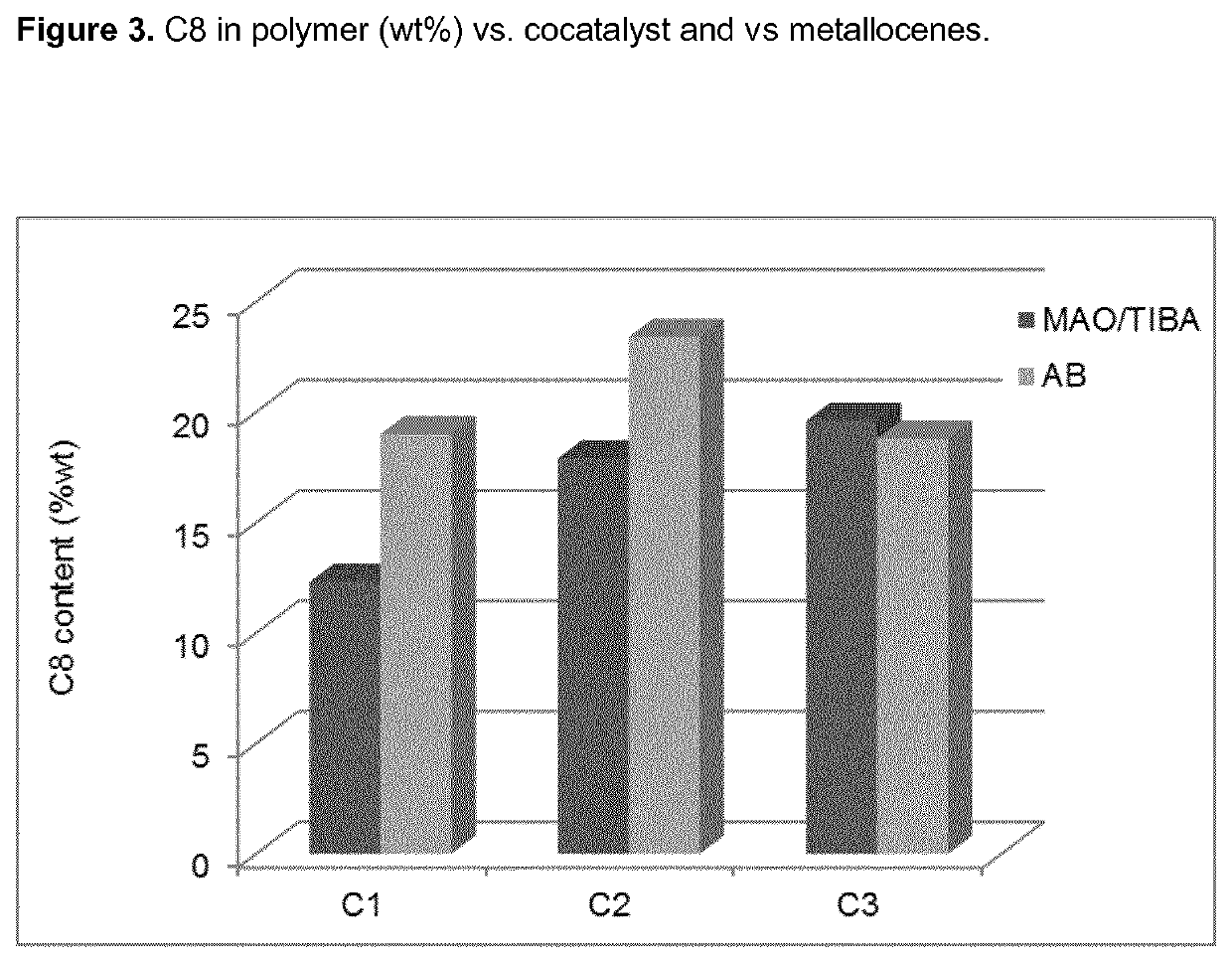New catalyst system for producing polyethylene copolymers in a high temperature solution polymerization process
- Summary
- Abstract
- Description
- Claims
- Application Information
AI Technical Summary
Benefits of technology
Problems solved by technology
Method used
Image
Examples
examples
Methods
DSC
[0114]Temperature modulated DSC experiments were performed in a TA Instruments Q2000 DSC operated in modulated mode and calibrated with indium, tin and zinc according to ISO 11357-1. Circa 5 mg of the sample were placed in an aluminium pan. The temperature was initially raised to 180° C. and afterwards lowered to −88° C. at 10° C. / min as in standard DSC. Afterwards the temperature was raised by a temperature modulated scan with heating rate of 2° C. / min modulated of 0.32° C. every 60 seconds. The glass transition temperature was measured from the reversible heat flow thermogram as the inversion point at transition.
[0115]If the polymer composition has been estimated by Tg(DSC) the following internal correlation has been used: C8(wt %)=(Tg(° C.)+19.16) / −1.059
Zr and Hf Determination (ICP-Method)
[0116]The elementary analysis of a catalyst was performed by taking a solid sample of mass, M, cooling over dry ice. Samples were diluted up to a known volume, V, by dissolving in nitr...
preparation examples
CATALYST PREPARATION EXAMPLES
a) Complex Preparation
Complex—C0
[1-(η5-Cyclopentadien-1-yl)-1-(η5-2,7-di-tert-butylfluorenyl)-1,1-diphenylmethane] hafnium dimethyl
[0161]Diphenylmethylene(cyclopentadienyl)(2,7-di-tert-butylfluoren-9-yl)hafnium dicloride was synthesized according to the literature Hopf, A, Kaminsky, W., Catalysis Communications 2002; 3:459.
[0162]To a solution of 3.78 g (5.0 mmol) of [1-(η5-cyclopentadien-1-yl)-1-(η5-2,7-di-tert-butylfluorenyl)-1,1-diphenylmethane]hafnium dichloride in a mixture of 50 ml of toluene and 50 ml of ether 7.0 ml (14.77 mmol) of 2.11 M MeMgBr in ether was added. The resulting mixture was refluxed for 30 min and then evaporated to ca. 25 ml. The obtained mixture was heated to 80-90° C. and filtered while hot through glass frit (G4) to remove insoluble magnesium salts. The filter cake was additionally washed with 5×20 ml of warm hexane. The combined filtrate was evaporated to ca. 5 ml, and then 20 ml of hexane was added to the residue. Yellow pow...
PUM
| Property | Measurement | Unit |
|---|---|---|
| temperature | aaaaa | aaaaa |
| pressure | aaaaa | aaaaa |
| melt index MI2 | aaaaa | aaaaa |
Abstract
Description
Claims
Application Information
 Login to View More
Login to View More - R&D
- Intellectual Property
- Life Sciences
- Materials
- Tech Scout
- Unparalleled Data Quality
- Higher Quality Content
- 60% Fewer Hallucinations
Browse by: Latest US Patents, China's latest patents, Technical Efficacy Thesaurus, Application Domain, Technology Topic, Popular Technical Reports.
© 2025 PatSnap. All rights reserved.Legal|Privacy policy|Modern Slavery Act Transparency Statement|Sitemap|About US| Contact US: help@patsnap.com



